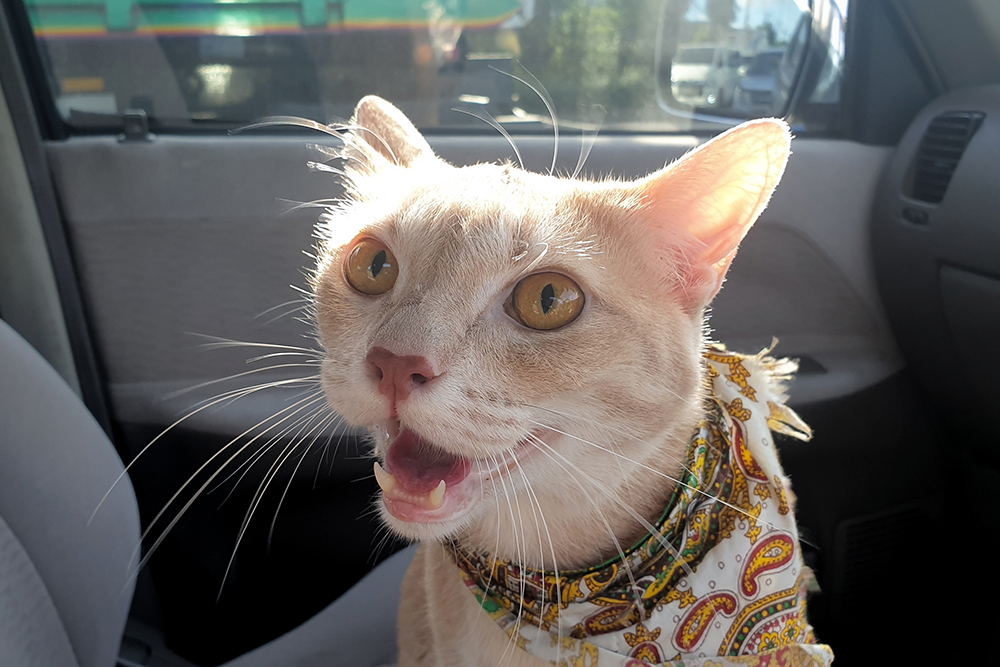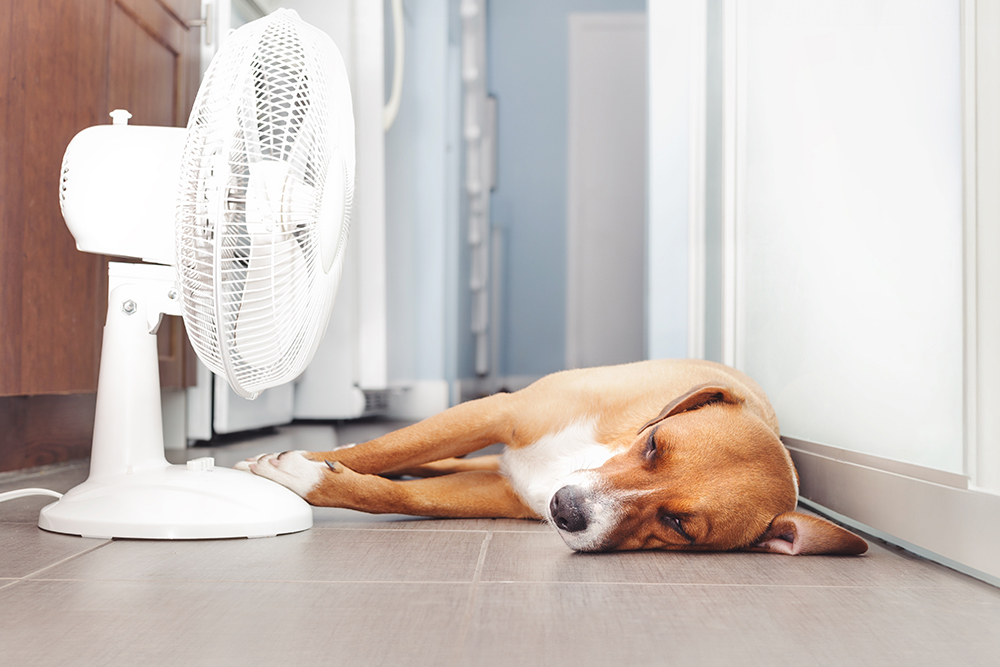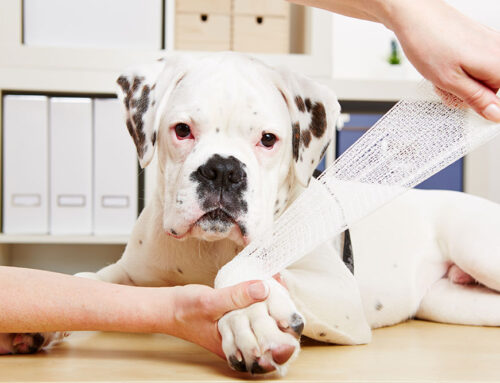Heat Stress in Pets and Large Animals: Warning Signs, Risks, and Emergency Care
Dogs, cats, and livestock are all at risk when the heat rises. Covered in fur and limited in how they cool themselves, animals cannot sweat the way people do. Instead, they rely on panting or minimal heat release through their skin, which makes them far more vulnerable to overheating- whether they are pets relaxing at home or livestock working in the field.
Recognizing the early signs of heat stress and acting quickly can mean the difference between a smooth recovery and a life-threatening emergency. With awareness and preventive care, pet owners and livestock handlers can keep the animals they love safe.
At Alpine Animal Hospital, our team cares for pets of all sizes, from dogs and cats to horses, cattle, and even exotic species. As a locally owned, community-focused practice, we provide both urgent care during business hours and 24/7 emergency on call services. Whether it is a routine concern or a life-threatening case of heatstroke, we are here to make sure families never face an emergency alone.
Why Dogs and Cats Overheat Faster Than People
Pets regulate body temperature primarily by moving air across moist tissues in the mouth and nose. Panting evaporates water, which carries heat away, but this system is limited during humid weather, vigorous exercise, or confinement in hot spaces. Pets also carry fur coats and have fewer sweat glands, so their bodies store heat more easily than they release it.
Certain pets are at much higher risk:
- Short-nosed breeds such as Bulldogs, Pugs, and Persian cats have narrowed airways that restrict airflow. Current brachycephalic research shows that even a modest increase in body weight raises heat risk by further limiting thermoregulation.
- Senior or overweight pets generate more heat during movement and cool less efficiently.
- Thick-coated breeds such as Huskies and Malamutes retain heat in dense undercoats.
- Pets with heart or respiratory disease have a reduced ability to move oxygen and circulate blood, which impairs cooling.
How to Recognize Heatstroke in Pets
Heat stress usually begins with subtle changes: heavy panting, drooling, or restlessness. Some pets will pace or seek shade, while others simply slow down.
As the body overheats, more severe signs appear. The heart races, breathing becomes strained, and gums may look bright red or even bluish. Vomiting, diarrhea, disorientation, or collapse often follow. Without intervention, seizures and organ failure can develop quickly.
If you see these red flags, move your pet to a cooler space, offer a small amount of water, and call your veterinarian immediately. The urgent care team at Alpine can often see pets the same day, and after-hours, our emergency line ensures critical cases receive immediate attention.
Why Heatstroke Is Still Dangerous After Your Pet Cools Down
Heatstroke is more than a high temperature. Excess heat injures cells and blood vessels throughout the body. Even after external temperature falls, internal damage can continue for 24 to 72 hours.
Common secondary complications include:
- Acute kidney injury from dehydration, low blood pressure, and muscle breakdown products.
- Liver damage that can alter clotting and metabolism.
- Coagulopathy and DIC where the blood’s clotting system becomes overactive, leading to internal bleeding or microclots.
- Gastrointestinal injury that causes ulceration, bloody diarrhea, or leakage of bacteria into the bloodstream.
- Rhabdomyolysis where overheated muscles break down, releasing myoglobin that stresses the kidneys.
- Heart rhythm disturbances and low blood pressure that reduce oxygen delivery.
- Neurologic problems such as tremors, seizures, or behavior changes due to brain swelling or reduced oxygen.
Because of these risks, pets that have suffered heatstroke need professional monitoring, repeated bloodwork, and supportive care even if they appear improved at home. At Alpine, our advanced services include continuous monitoring, hospitalization, and surgical support when needed.
Veterinary Treatment and Aftercare: What to Expect
Even if your pet looks better, professional care is essential to identify hidden complications and prevent relapse.
Initial stabilization usually involves controlled cooling, oxygen therapy if needed, and intravenous fluids to restore circulation and correct dehydration. Pets are often given anti-nausea medication, pain control, and gastroprotectants to reduce the risk of ulcers and vomiting. Careful temperature monitoring is performed to avoid overcooling.
Diagnostics that guide treatment
- Bloodwork to check electrolytes, kidney and liver values, blood sugar, and muscle enzymes.
- Coagulation tests to screen for clotting disorders or DIC.
- Urinalysis to detect dehydration or myoglobin from muscle injury.
- ECG and blood pressure to monitor for arrhythmias and shock.
- Lactate levels to assess tissue oxygenation and response to fluids.
Ongoing monitoring and secondary complication management often extend over 24 to 72 hours. During this time, veterinarians repeat laboratory tests to track organ recovery, administer plasma or other blood products if clotting becomes abnormal, and provide antibiotics only if infections such as aspiration pneumonia or sepsis are suspected. Nutritional support is gradually reintroduced, and activity is carefully limited until stability is confirmed.
Home care after discharge focuses on strict rest for several days in a cool, quiet space, with frequent small meals and plenty of fresh water. Exercise, travel, and exposure to warm environments should be avoided for at least one to two weeks. Follow-up rechecks and bloodwork ensure complete recovery and help rule out lingering organ damage.
Heat Risks for Horses and Livestock
It is not only dogs and cats who are vulnerable to overheating. Horses, cattle, sheep, and goats are also at risk when temperatures rise. Large animals generate significant body heat during movement and, like pets, they have limited cooling mechanisms. Heat stress in livestock may appear as rapid breathing, drooling, reduced appetite, or sudden drops in milk production. Horses may show lethargy, muscle weakness, or even colic-like symptoms.
Farm animals and livestock need extra care in hot weather. Providing ample shade, good airflow, and unlimited access to clean water is critical. Misters, sprinklers, and fans can help reduce body temperatures in barns or holding areas. Transport and heavy work should be scheduled for the cooler parts of the day, and animals should be closely monitored for signs of distress.
At Alpine Animal Hhospital, our veterinarians are experienced in recognizing and treating heat stress in large animals. We provide on-site evaluations, urgent care, and emergency stabilization for horses and livestock in our community. With proactive planning and quick response when problems arise, farm owners can protect herd health and prevent heat-related losses.
First Aid for Suspected Heatstroke: What to Do Right Now
- Move to a shaded, cool area away from hot surfaces.
- Offer small sips of water if your pet is alert. Do not force drinking.
- Start active cooling with cool (not ice-cold) water on the belly, armpits, groin, and paw pads. Use a fan to enhance evaporation.
- Avoid ice baths, alcohol rubs, or covering your pet completely with wet towels because these trap heat and can worsen outcomes.
- Call your veterinarian immediately and begin transport once basic cooling has started. The Alpine Animal Hospital emergency team is available 24/7 for life-threatening cases.

Keeping Animals Safe from Overheating
Heatstroke is a preventable emergency. By recognizing risk factors, watching for early warning signs, and making thoughtful choices about activity, housing, and environment, both pet owners and livestock handlers can protect the animals in their care year-round. Acting quickly at the first signs of overheating and seeking professional veterinary help without delay gives animals the best chance of recovery and long-term health.
If you are ever concerned about your animal’s wellbeing, contact Alpine Animal Hospital. Our compassionate, community-focused team provides care for dogs, cats, horses, livestock, and even exotics. From urgent care visits to advanced emergency and surgical support, we are here to help keep every member of your herd, flock, or family safe.







Leave A Comment